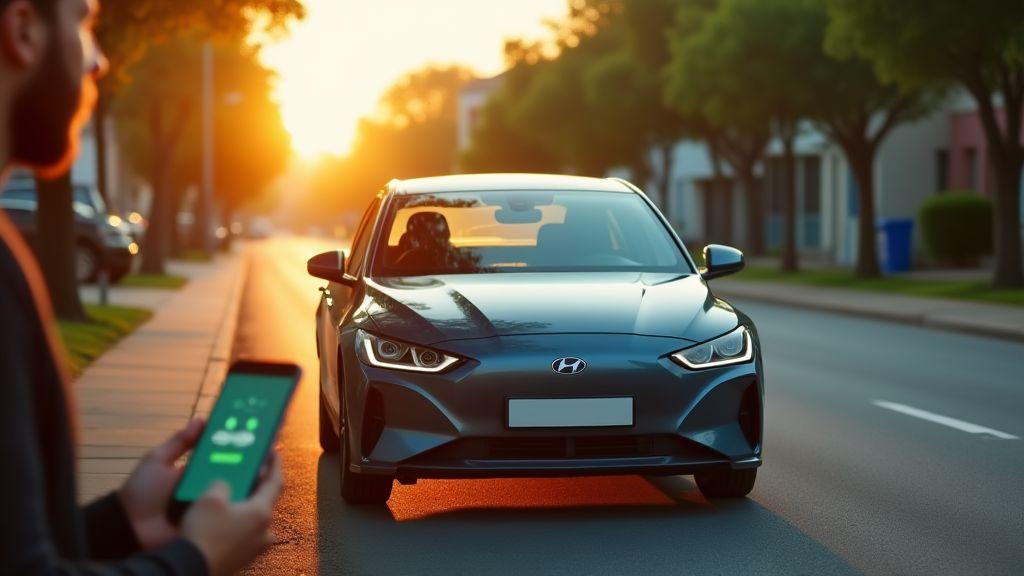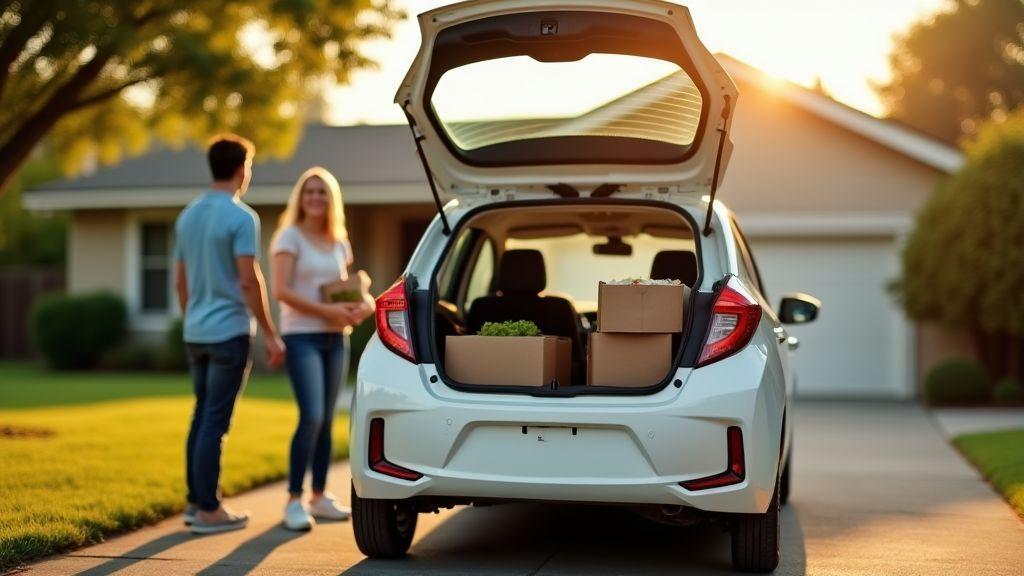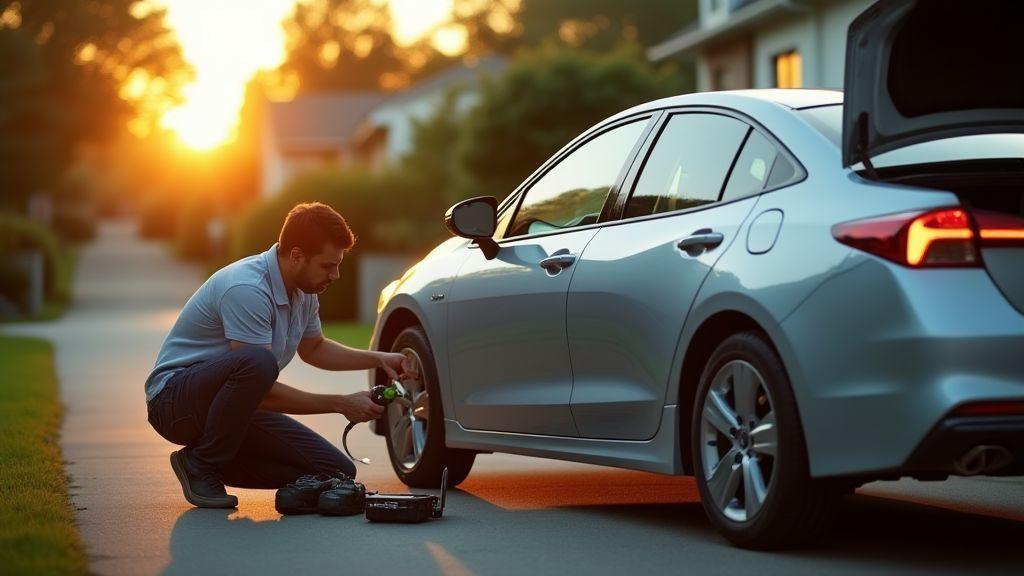Top 10 Best Hybrid Cars for Fuel Efficiency
Top 10 Best Hybrid Cars for Fuel Efficiency helps you cut fuel costs and pick the right hybrid with clear, practical guidance. You’ll learn how EPA MPG works and what combined, city, and highway MPG mean for your real driving. The guide gives a quick checklist for MPG labels, shows how to match sedans, SUVs, and crossovers to your habits, and explains when to pick a fuel‑sipping hybrid SUV or a city‑friendly hybrid sedan. You’ll see how incentives, tax credits, and total cost of ownership lower your purchase cost, get a simple fuel savings calculator, and learn battery basics like battery size, regenerative braking, and battery care. Finally, you get easy maintenance tips, common issue warnings, and a scorecard plus test drive tips to confirm real MPG before you buy.
Key Takeaway
- Pick hybrids with the best MPG for your driving mix.
- Smooth driving increases savings.
- Check battery warranty and replacement costs.
- Compare city vs. highway fuel numbers.
- Favor reliable models with low upkeep.

How EPA MPG works so you can pick the best hybrid cars for fuel efficiency
The EPA MPG label gives one combined number built from lab tests simulating city and highway driving. When you scan ads or compare the Top 10 Best Hybrid Cars for Fuel Efficiency, that combined figure is the quick way to rank models at a glance. For an official primer on interpreting those labels, see how to read EPA fuel economy labels.
Tests run on a dyno under controlled settings. Hybrids often shine in city tests because the electric motor, regenerative braking, and engine-off idle cut gasoline use. Plug-in hybrids may show MPGe and an electric range in addition to gasoline MPG — read both to know how charging habits affect real fuel use.
Understanding combined, city, and highway MPG numbers
City MPG reflects low-speed stops, starts, and idling — where hybrids gain the most. Highway MPG measures steady higher-speed driving; hybrids help less there because the engine runs more and regenerative braking provides less energy. The combined number is a weighted average and is the easiest quick comparison.
| Metric | What it measures | Typical hybrid behavior |
|---|---|---|
| City MPG | Stop-and-go, low speed | Often best number for hybrids |
| Highway MPG | Steady faster speeds | Closer to non-hybrid figures |
| Combined MPG | Weighted average of both | Quick comparison point |
How official test numbers match your real-world driving
Official numbers give a baseline; real MPG varies with driving style, load, speed, and temperature. Expect a rough adjustment of 10–25% based on your mix of city and highway driving. MPGe indicates electric-equivalent efficiency for plug-ins — if a PHEV lists 60 MPGe and 40 MPG, actual gasoline use depends on how often you charge.
Quick checklist for comparing MPG labels
- Read combined MPG first, then city vs highway.
- Note MPGe and electric range for plug-ins.
- Match the label to your typical trips.
- Factor in cold weather, cargo, and roof accessories.
- Check owner reports for real-world adjustments.
How you choose the right hybrid type for your needs: sedans, SUVs, and crossovers
Match the vehicle to your daily routine. If you drive short city trips and park tight, a sedan often fits best. If you haul kids, gear, or need AWD, pick an SUV. Crossovers balance cargo and comfort and often deliver middle-ground fuel numbers. If you want a government overview of hybrid options to help match vehicle class to your needs, compare hybrid and plug-in vehicle types.
Think space and habits, not just style. Sedans are lighter and more aerodynamic, so they tend to cost less to run. SUVs give room and capability but may cut into MPG. Check warranties, cargo needs, and insurance so you don’t get sticker shock later.
Take three quick steps before you buy: check EPA MPG for city and highway, take a short drive to feel acceleration and braking, and read owner notes about battery life.
When you should pick the best hybrid SUVs for gas mileage
Choose a hybrid SUV when space, towing, AWD, or rough-road capability matter. Modern hybrid SUVs can reach strong highway MPG thanks to better aerodynamics and smarter powertrains. If you carry passengers and cargo often, a hybrid SUV can be the practical choice.
Why best hybrid sedans for MPG often give you better city mileage
Sedans usually win city MPG: they’re lighter, have lower drag, and benefit more from regenerative braking during stop-and-go driving. If your commute is mainly urban, a hybrid sedan often cuts fuel bills the most.
Simple rule to match vehicle type to your driving habits
- Count daily miles and trip types (city vs highway).
- List passengers and cargo needs.
- Choose: sedan for city mpg, SUV for space/conditions, crossover for balance.
| Vehicle type | Best for | Typical combined mpg range |
|---|---|---|
| Hybrid Sedan | City commuters, small families | 40–60 mpg |
| Hybrid Crossover | Mixed use, small cargo needs | 30–45 mpg |
| Hybrid SUV | Large families, towing, rough roads | 25–40 mpg |

How you save money up front and over time with affordable fuel efficient hybrid cars
Hybrids often cost more than basic gas cars but rebates, incentives, and lower fuel and maintenance costs can flip the math. If you check incentives and financing, you can reduce the upfront gap. Over time, especially with city driving, hybrids cut fuel bills and often lower brake and engine wear.
Resale value and battery warranties add to the financial picture. Many hybrids hold value well; battery warranties cover major costs for years. Use lists like the Top 10 Best Hybrid Cars for Fuel Efficiency to find models with the best long-term value.
How incentives, tax credits, and rebates lower your purchase cost
Stack federal credits, state rebates, and local offers where available. Plug-in hybrids often qualify for larger federal credits; non-plug-in hybrids may get smaller state or local rebates. Rules change, so call your dealer and check state energy sites and utility offers before you buy — or see official federal plug-in vehicle tax credit details. You can also contact our team if you need help locating local incentives.
How you compare total cost of ownership for economical hybrid cars for city driving
Compare purchase price after incentives, fuel cost, maintenance, insurance, and resale value. Convert to yearly cost to compare models. City driving favors hybrids, so use city MPG in your fuel estimates.
Steps to compare models:
- List purchase price after rebates.
- Estimate annual fuel cost using your miles/year and city MPG.
- Add yearly maintenance and insurance estimates.
- Subtract expected resale value after ownership period.
- Divide net cost by years owned to get annual cost.
Basic calculator of fuel savings to use before you buy
Annual Fuel Cost = (Annual Miles / City MPG) × Fuel Price.
Example:
| Example Vehicle | City MPG | Annual Miles | Fuel Price | Annual Fuel Cost | Annual Savings |
|---|---|---|---|---|---|
| Gas car (sample) | 30 | 12,000 | $3.50 | (12,000 / 30) × 3.50 = $1,400 | — |
| Hybrid (sample) | 50 | 12,000 | $3.50 | (12,000 / 50) × 3.50 = $840 | $560 |
What you should know about battery, electric range, and long-range hybrid cars fuel efficiency
Battery size and electric range affect fuel use. Small hybrid batteries assist the engine and help in city driving. Plug‑in hybrids (PHEVs) have larger batteries that can power many short trips on electricity alone, cutting gasoline use if you charge frequently. For deeper technical context about how batteries and range affect efficiency, see research on vehicle batteries and range. Bigger batteries add weight, which can reduce highway MPG.
Long-range PHEVs can replace many short gas trips, but if you often exceed electric range, the car shifts to gasoline and the battery weight can lower highway efficiency. EPA ratings are useful; real numbers depend on charge habits, temperature, and speed. Use the Top 10 Best Hybrid Cars for Fuel Efficiency as a starting point to compare these trade-offs.
| Battery size | Typical electric range | How it affects fuel use |
|---|---|---|
| Small (assist) | 0–5 miles | Helps start/stop and regen; best in city |
| Medium (short PHEV) | 10–40 miles | Cuts daily fuel if charged often; adds weight |
| Large (long‑range PHEV) | 40 miles | Replaces many short gas trips; heavier on highways |
How battery size and regenerative braking affect your hybrid’s MPG
Larger batteries give more electric miles but increase weight. Regenerative braking recovers energy during slowing and helps most in stop-and-go traffic. Together they improve city MPG the most.
What hybrid cars with highest MPG ratings do differently
Top MPG hybrids use small, efficient engines, low rolling-resistance tires, tight aerodynamics, and transmissions tuned to keep the engine in its best band. Manufacturers also use software to blend electric and gas power and reduce weight elsewhere to offset battery mass.
Short guide to hybrid battery care for better MPG
- Charge PHEVs regularly to use electric miles.
- Avoid leaving the battery at extreme charge states long-term.
- Park in shade when possible to reduce thermal stress.
- Keep tires inflated and brakes adjusted so regen works well.
- Follow manufacturer service intervals for coolant and electrical checks.

How your maintenance and driving habits affect MPG for most fuel efficient hybrid vehicles
Hybrids combine gasoline and electric systems—neglect one and both suffer. Low tire pressure, dirty air filters, or skipped oil changes make the engine work harder and cut MPG. Hard acceleration, high speeds, and heavy loads reduce EV assist and increase fuel use. For additional actionable guidance, check these practical driving and hybrid maintenance tips. Smooth driving and timely maintenance preserve MPG.
Regular service tasks that keep your hybrid at top fuel economy
Routine service keeps both power sources healthy. Hybrids still need oil and coolant changes, and they need periodic checks of the hybrid battery, power electronics, and high-voltage connections. A clean, well-lubricated engine draws less from the battery.
Core tasks:
- Change engine oil and filter (every 5,000–10,000 miles depending on oil).
- Rotate and balance tires (every 5,000–7,500 miles).
- Check and inflate tires monthly.
- Replace air and cabin filters every 12,000–24,000 miles.
- Inspect brakes every 10,000–15,000 miles.
- Hybrid system diagnostic check annually or per manufacturer.
| Task | Typical Frequency | MPG Impact |
|---|---|---|
| Tire pressure checks | Monthly | Moderate to high |
| Oil & filter change | 5,000–10,000 mi | Moderate |
| Brake inspection | 10,000–15,000 mi | Moderate |
| Hybrid system check | Annually | High if faults present |
How you spot common issues that reduce your mileage
Watch for a sudden MPG drop, fuel smell, or hybrid system warning lights. Loss of EV-only range, odd noises, or longer warm-up times indicate problems. Do quick checks yourself—tire pressure, brake drag, and dashboard messages—and get diagnostics if the hybrid warning lamp appears.
Maintenance schedule reminders to protect fuel economy
Set reminders: tire pressure monthly, oil changes at the interval your manual lists, and a yearly hybrid systems check. Add a quick inspection after towing or heavy cargo runs.
How you use Top 10 Best Hybrid Cars for Fuel Efficiency lists to pick your next car
Treat the Top 10 Best Hybrid Cars for Fuel Efficiency list like a map. Scan combined MPG, city/highway splits, and EPA range to find models that match your routine. Read tech notes on battery size and electric-only range to understand real behavior. Narrow to two or three finalists, then test them on your actual routes.
What you should look for in Top 10 hybrid cars fuel economy comparisons
- Real-world MPG numbers, not just headline combined ratings.
- City/highway splits and third-party test results.
- Total cost of ownership: purchase price, credits, projected fuel savings, and warranty.
- Battery warranty and likely repair costs.
Test drive tips to confirm a model’s real MPG for your driving
Drive each finalist on the roads you use most and compare apples to apples: start cold, do your normal short trip, and a steady highway run. Reset the trip computer before each test.
- Start with a cold engine and drive your usual short trip.
- Do a steady highway run at your normal speed for 20–30 minutes.
- Time a stop-and-go urban loop that mimics errands.
- Watch and record the trip computer mpg.
- Note comfort, visibility, and how hard the car needs to work to pass or climb hills.
Quick scorecard to rank models by mileage, cost, and features
Use a simple points system: city mpg, highway mpg, purchase price, and feature bonus (battery warranty, driver aids). Add scores to rank practical choices: a car can win on MPG but lose on value or comfort.
| Model | City MPG | Hwy MPG | Est. Price | Key Feature |
|---|---|---|---|---|
| Toyota Prius | 58 | 53 | $28,000 | Proven reliability |
| Hyundai Ioniq Hybrid | 57 | 59 | $24,000 | High highway mpg |
| Honda Accord Hybrid | 48 | 47 | $30,000 | Smooth power delivery |
| Toyota Camry Hybrid | 51 | 53 | $29,000 | Comfortable ride |
| Ford Escape Hybrid | 44 | 37 | $32,000 | Compact SUV utility |
Conclusion
Start with EPA MPG and the combined, city, and highway splits to match a vehicle to your routes. Weight city MPG if your driving is stop‑and‑go; favor highway MPG if you spend hours on the interstate. Pay attention to the battery story — PHEV range and MPGe change how often you fill the tank — and check battery warranties, charging habits, and potential weight penalties.
Use incentives and tax credits to lower upfront cost and fold those savings into your total cost of ownership. Keep the car healthy with tires, filters, brakes, and routine hybrid checks, and practice smooth driving to protect efficiency. Test-drive finalists on your routes and use a simple scorecard. Do this, and you’ll turn the Top 10 Best Hybrid Cars for Fuel Efficiency list into a practical, money-saving buy.
For more detailed picks and tools to guide your next move, visit our home page. You can also review our privacy policy and terms of use, or contact us if you have specific questions.

